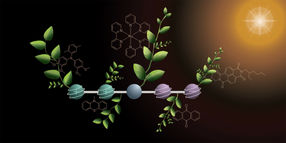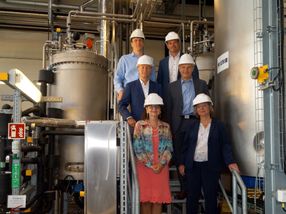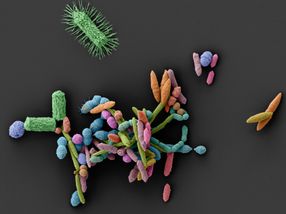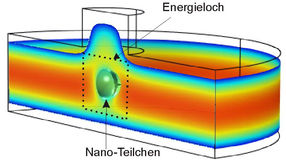Cooperation with Namibia underway
Natural resources as a basis for new materials
Advertisement
The INM – Leibniz Institute for new materials officially began its collaborative effort with the University of Namibia (UNAM) by holding a kick-off workshop. The aim of the joint project, NaMiComp, which is funded by the German Federal Ministry for Economic Cooperation and Development, is to analyze Namibia’s locally available natural resources and then use them as a basis for new materials for industrial applications. INM and UNAM are working together on the NaMiComp project in order to establish and strengthen research competence in materials science at UNAM. In the long term, the aim is to build an on-site materials science institute at the University of Namibia.

f.l.: Gerhard Wenz, Saar Uni, Bernd Reinhard, INM, Günter Weber, INM, Erold Naomab, UNAM, Kenneth Matengu, UNAM, Aránzazu del Campo, , INM, Roland Rolles, Saar Uni, Carsten Becker-Willinger, INM.
INM
The two-day long workshop, which was held at the INM, was the inaugural event for building this cooperation. Further multi-day workshops, reciprocal visits by experts, field surveys and learning cafés are set to follow.
“We’re delighted that this collaborative effort is now gaining pace,” says Günter Weber, INM’s Business Director. “Many different skills are needed to transform a natural product into a commercially profitable material. This starts with the analysis of the different types of wood, and includes the actual material and product development right through to the marketing of potential products.”
The example of acacia trees and shrubs should be highlighted to demonstrate how this biomass can be used to produce sustainable, fire resistant building materials for use in cost-effective housing construction. The large number of acacia bush-invader in Namibia has now become an environmental issue.
Kenneth Kamwi Matengu, Pro-Vice Chancellor of the University of Namibia explains: “We have found a strong German partner in INM. This partnership will allow us to further our University’s research mission and to contribute to a commercial solution for the further processing of acacia wood into a variety of commercial products. Now that this project is underway, we have the opportunity to bring our joint vision a step closer to reality.”
Most read news
Organizations
Other news from the department science

Get the chemical industry in your inbox
By submitting this form you agree that LUMITOS AG will send you the newsletter(s) selected above by email. Your data will not be passed on to third parties. Your data will be stored and processed in accordance with our data protection regulations. LUMITOS may contact you by email for the purpose of advertising or market and opinion surveys. You can revoke your consent at any time without giving reasons to LUMITOS AG, Ernst-Augustin-Str. 2, 12489 Berlin, Germany or by e-mail at revoke@lumitos.com with effect for the future. In addition, each email contains a link to unsubscribe from the corresponding newsletter.
Most read news
More news from our other portals
Last viewed contents
Expanded compounding activities: Polymer Group aims for the 200,000 tonnes mark - Based on its record of continuous growth, the Polymer Group s aiming for an overall compounding volume of 200,000 MT/a for the first time ever in 2009
Asset swap between Wintershall and Statoil completed - Oil and gas production in Norway rises from around 3,000 barrels to almost 40,000 barrels of oil equivalent (boe) per day

New clues help explain why PFAS chemicals resist remediation - Work suggests new avenues for cleaning up these 'forever chemicals'
New method for art restoration using low toxicity ionic liquids
Sika acquires Duochem Inc. in Canada
Cocktail achieves superconducting boost - Scientists have now developed a high-performance material by mixing iron and selenium

Deutsches Elektronen-Synchrotron DESY - Hamburg, Germany

New photocatalyst made from an aerogel for more efficient hydrogen production - Airy and efficient
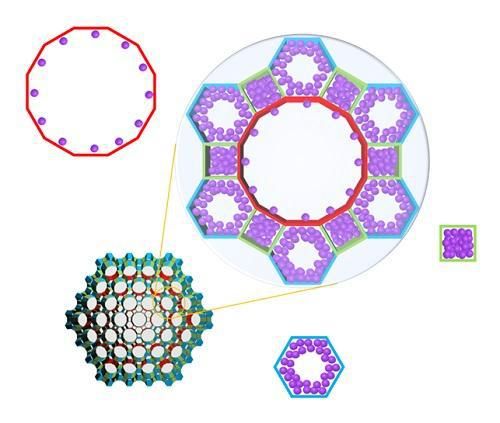
Real-time analysis of MOF adsorption behavior
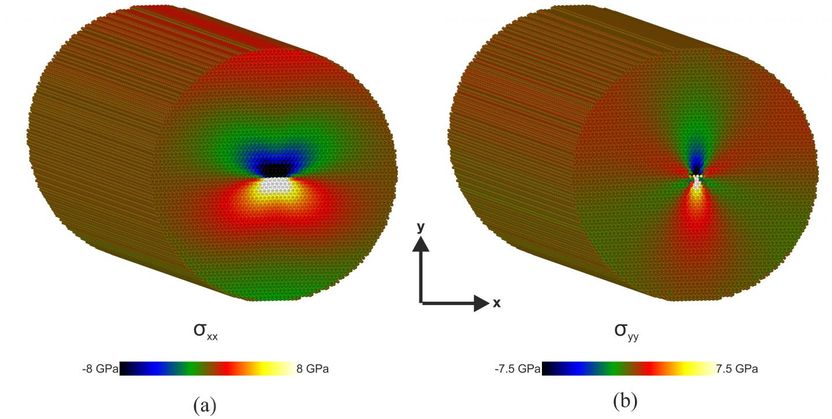
The culprit of some GaN defects could be nitrogen


























